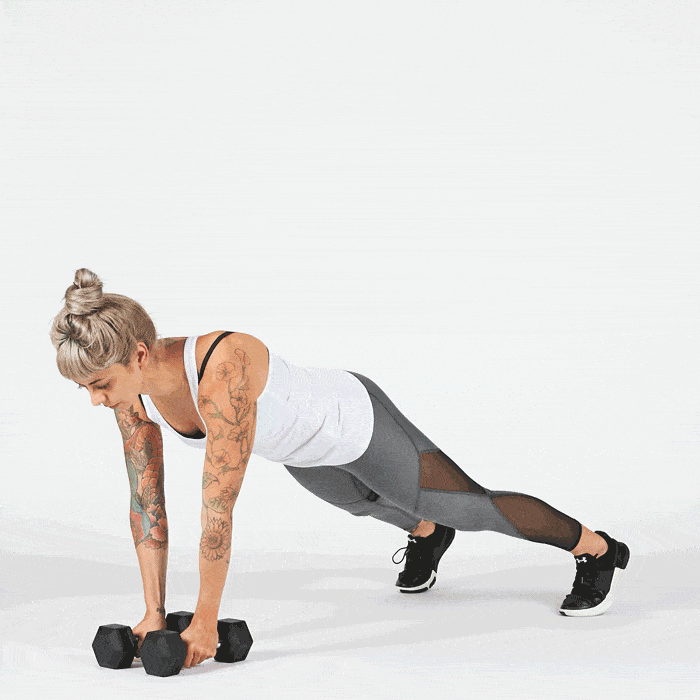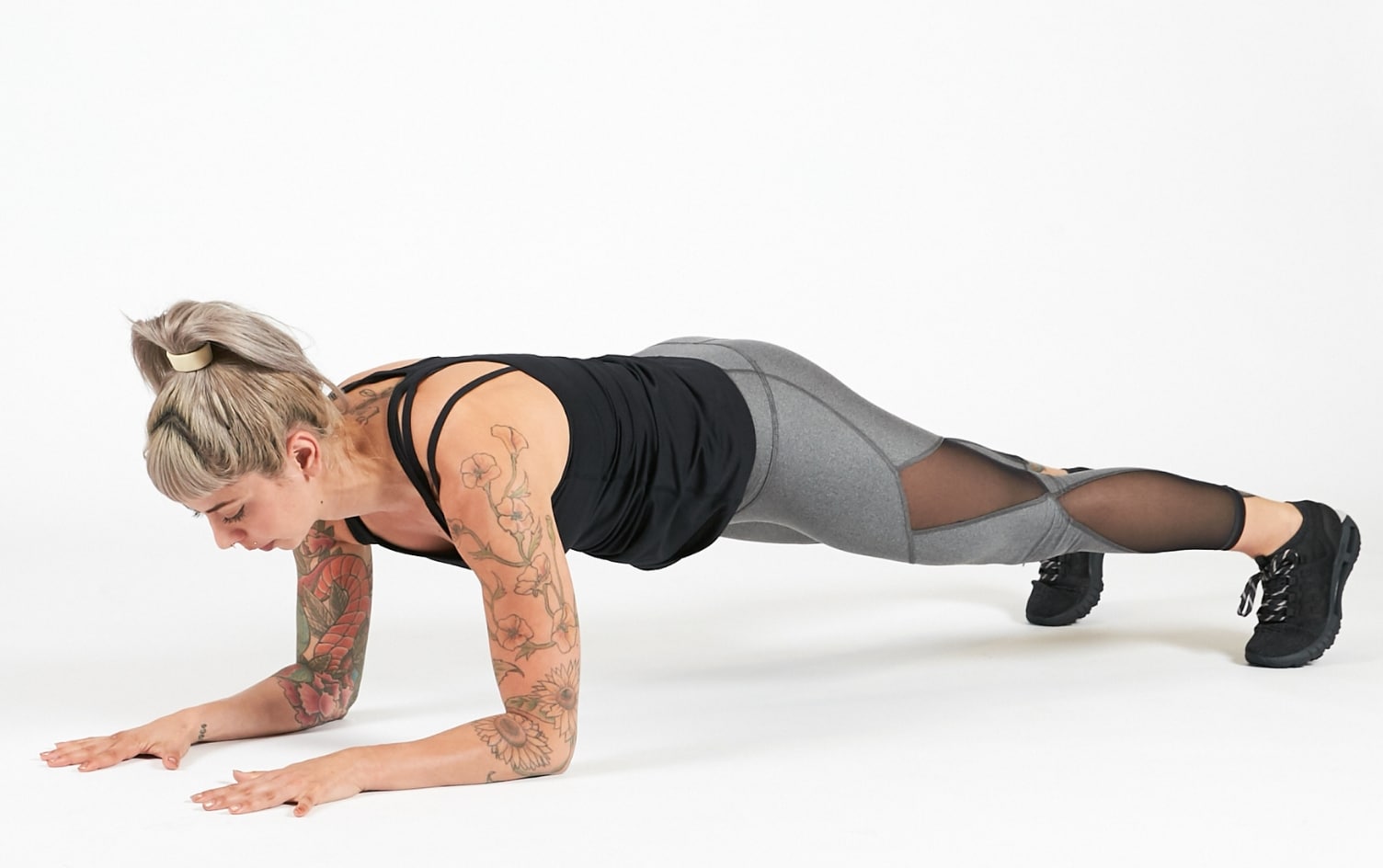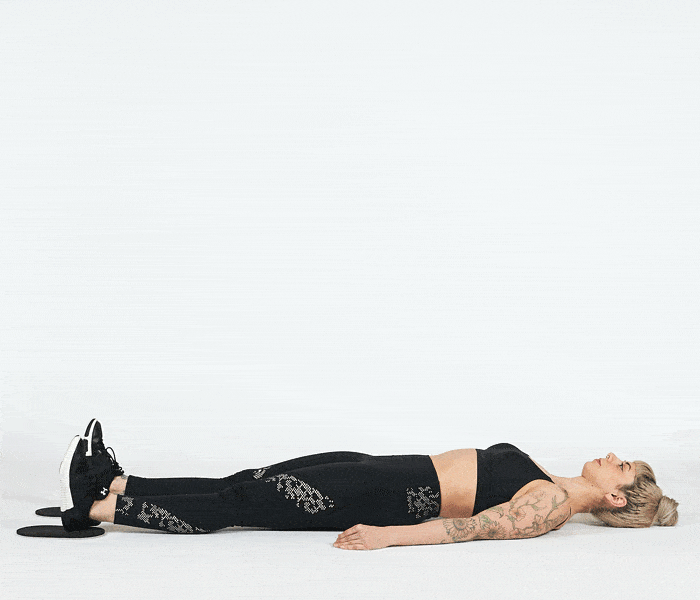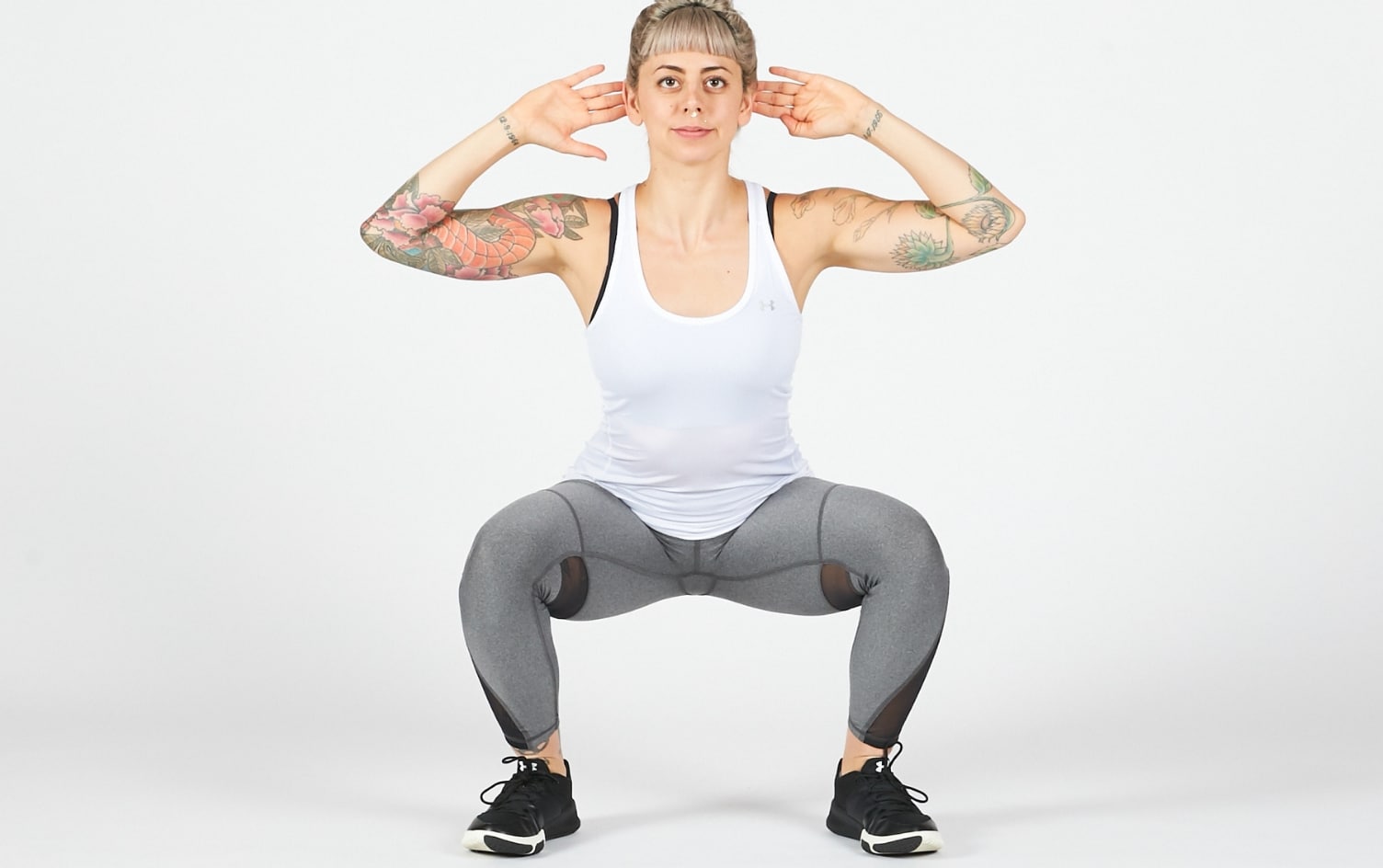A dedicated, regular yoga practice is great. But what’s better is the yogi who cross-trains. Flexibility and strength go together like cat-and-cow pose. One without the other creates imbalances within the body and increases the potential of getting injured. Incorporating strength training can transform your practice, strengthening muscles for poses that challenged you before. (I’m looking at you, chaturanga.)
Here are six strength-building moves to help counterbalance common yogi imbalances and power up your practice.
BICEP CURLS

Why: Poses like chaturanga and plank build pectoral and tricep strength, but there’s less focus on the biceps, rhomboids, deltoids and lats in yoga.
The move: Stand tall, feet hip-width apart, in mountain pose holding a dumbbell in each hand with your arms at your sides. For more support, lean on an incline bench with arms hanging toward the floor. Make sure your elbows are close to your torso and palms face forward. Keep your upper arms stable, exhale and curl the weights up to shoulder height while contracting your biceps. Inhale and lower the weights to the starting position.
RENEGADE ROWS

Why: Many yogis find their anterior deltoids are tight while the middle and posterior deltoids are weak. Rows can help strengthen the middle and posterior deltoids as well as develop postural support and upper-body strength.
The move: Start on your hands and knees (in table-top) with a dumbbell in each hand, below your shoulders. Keeping your arms close to your torso, exhale and pull the right dumbbell up to your waist. Focus on bringing your shoulder blades toward each other and your elbows close to your rib cage. Lower the dumbbell to the floor on your inhale and repeat with the opposite arm. For a greater challenge, try the row from plank.
SCAPULAR PUSHUPS

Why: The serratus anterior, a large muscle that wraps around the outside of your rib cage, helps move your arms in different directions, stabilizes the arms and shoulders and protects against neck pain. Because of that, they’re an important muscle for inversions and arm balances.
The move: Come into plank. Keeping your arms straight, slide your shoulder blades toward each other then outward away from each other.
SLIDING HAMSTRING CURLS

Why: Warrior, lunge and chair pose all focus on the quads while placing little, if any, emphasis on the hamstrings. The hamstrings stabilize the hips and keep the spine properly aligned. Strong hamstrings help maintain good posture and prevent leg injuries. This hamstring curl variation requires activation both as you lift and lower while also demanding glute and core stabilization and engagement.
The move: You don’t need any weights, but you’ll want two small towels or gliders and a smooth, flat floor. Lie on your back with your knees bent, heels directly under your knees and arms by your side. Flex your toes toward the sky so your heels are pressing into the ground. Contract your abdominals, and without rounding your back, squeeze your glutes to lift your hips into bridge pose. Exhale and slide your heels away from your body, extending the legs. Inhale and slide your heels back toward your butt. Stop when your heels are under your knees again.
SQUATS WITH LEG LIFT

Why: In backbends, yogis are told to relax the glutes. While there are glute-strengthening postures (hello, chair), the naturally flexible among us have lost so much sensitivity we tend to use other muscles and aren’t fully engaging our glutes. Squats build leg and glute strength and promote mobility and balance. Adding the leg lift encourages the standing opposite hip to stabilize as you feel the surrounding muscles kick in.
The move: Stand with your feet hip-width apart. Bend your knees and push your butt back to lower into a squat. Stand back up and lift your right leg out to the side, keeping your knee straight. Lower your right leg. Squat again and lift your left leg as you stand back up. To make this more challenging, place a band around both legs just above the knees or hold dumbbells.
WRIST CURLS
Why: These muscles are used to lift and grasp. Strengthening them helps with postures like chaturanga and crow that place a majority of your weight on the wrists.
The move: Stand tall, feet hip-width apart, in mountain pose with a dumbbell in each hand. Bend your elbows to 90 degrees and keep them tucked against your waist. Turn your palms to face up. Inhaling, flex your wrists so the knuckles point down toward the floor. Exhaling, point your knuckles up toward the ceiling.
Originally published June 2019, updated September 2022
Ready to take the next step? Unlock MyFitnessPal Premium to access custom goal settings, quick-log recipes, and guided plans from a registered dietitian. Premium users are 65% more likely to reach their weight loss goals!




